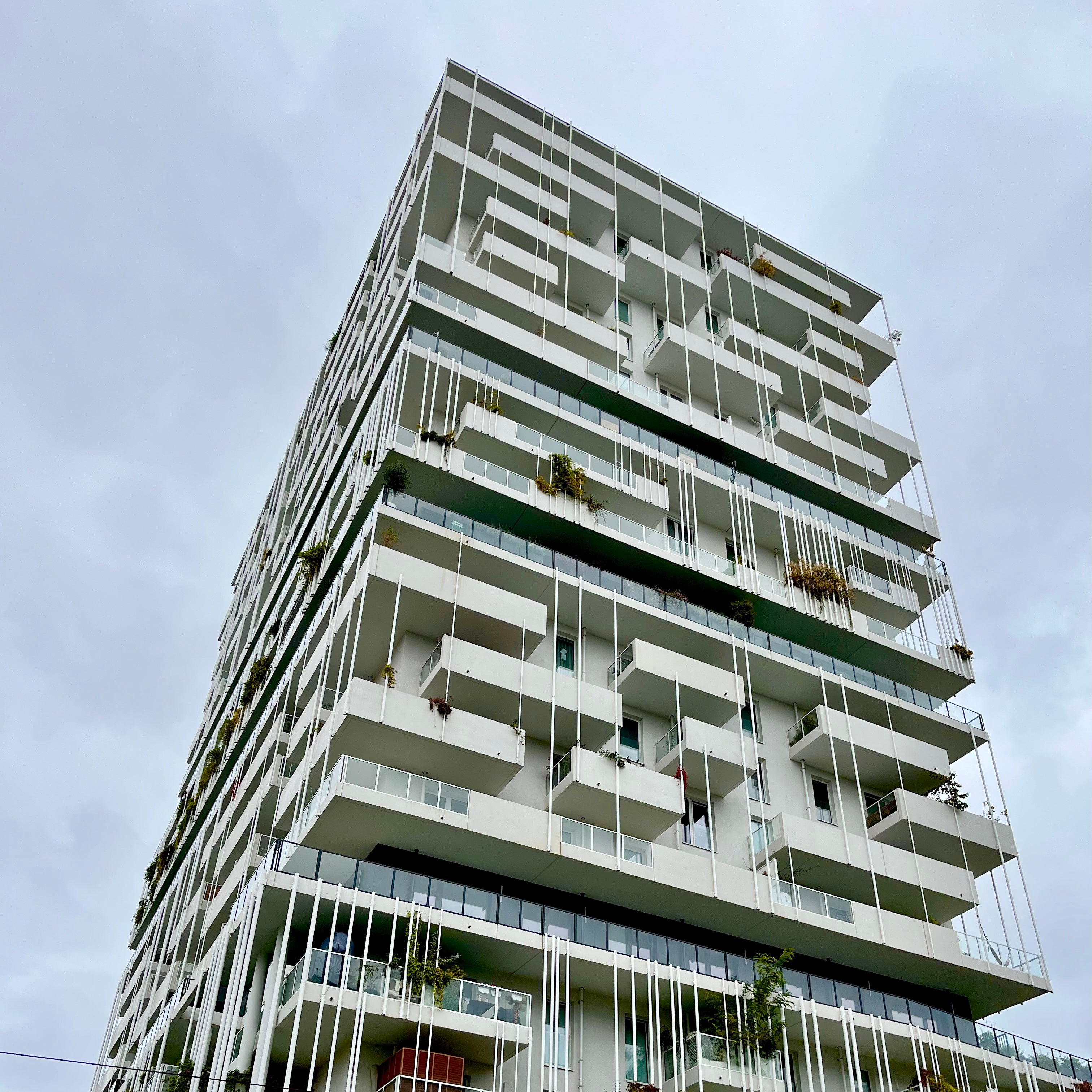
World Heritage Trail Course Envisions Connection Between Monticello and UVA
|
Image

|
Image

|
| (left–right) House at Monticello, photo: CyberXRef (CC by 3.0) and University of Virginia's Grounds, photo: UVA Communications. | |
How do we reconnect two of the most historically significant cultural landscapes in the United States and invite new ways of learning and remembering across them? This question sits at the heart of World Heritage Trail, the special topics course taught in Fall 2025 by Lyle Solla-Yates in partnership with the Thomas Jefferson Foundation.
With just five students—three undergraduate planning students and two graduate architecture students—the course operates as an intimate learning cohort. The scale allows for close mentorship, collective site exploration, and deep conversation across disciplines as students navigate questions at the intersection of design, planning, history, and public interpretation.
Monticello and the University of Virginia’s Academical Village are jointly designated as a UNESCO World Heritage Site, recognized together for their architectural and cultural significance and shared authorship under Thomas Jefferson. Yet today, the physical and symbolic space between them is fragmented by highways, development, and uneven public access. The course challenges students to rethink that terrain and imagine a future connection—one that foregrounds layered histories, equitable mobility, and the public’s relationship to place.
“With this class, we wanted to do research that is of global public benefit and can result in achievable positive change,” Solla-Yates noted. “I went in with some preparation but no fixed ideas of what the students would come up with, so it’s been a joy to be inspired by them and to see them inspire each other with new ideas.”

Immersive Research Across the Landscape
Students traced both historical and contemporary movement between Monticello and the university through extensive site visits. At Monticello, they toured the house, grounds, and parts of the Saunders-Monticello Trail, with special access to the Dome Room and Mulberry Row—where they met with Monticello’s Director of Historic Interpretation and Audience Engagement Brandon Dillard for discussion next to the spaces where enslaved people lived and labored. Professor of Architectural History Louis Nelson led a tour of UVA's Grounds, the Corner, West Main, and the Downtown Mall, closely studying where the historic link between the UNESCO sites has been severed and where opportunities for reconnection may lie.
Students also gained comparative historical context through researching the Monacan Ancestral Museum, James Monroe’s Highland, and James Madison's Montpelier, informing conversations about Indigenous homelands and plantation landscapes. They worked with Monticello researchers and Charlottesville city officials to examine archival evidence and oral histories—including attempts to trace how Jefferson himself traveled between his estate and the university during the Marquis de Lafayette’s visit. While no single route is confirmed, the investigation helped students understand the interpretive stakes and possibilities at hand.
Navigating Community Input and Multiple Visions
Stakeholder engagement played a key role throughout the course. Students found strong enthusiasm across organizations and civic partners, though expectations varied widely: differing perspectives on where the trail should run, what stories it should tell, and how visitors should experience it. Negotiating that range of vision became part of the learning process. “We have talked about many different visions from different perspectives and there is good in all of them, but they conflict,” Solla-Yates explained. “Even among the student proposals we see very different visions for where and how the Trail works.”

Precedent Studies
To contextualize their work, students examined heritage and trail models from around the world, including Scotland’s digital UNESCO trail, the Via Appia in Rome, the San Antonio River Walk, Richmond’s Slave Trail, and the Jefferson School African American Heritage Center’s digital history project in Charlottesville. These references encouraged students to think beyond a single physical path—considering layered, hybrid experiences that combine digital interpretation, ecological stewardship, and culturally rooted storytelling.
Partnership in Action
The course grew from a conversation between Jane Kamensky, President of the Thomas Jefferson Foundation, and the School of Architecture's Dean Malo A. Hutson, who brought Solla-Yates in to shape the project because of his public service and research background. "I am hopeful that this course has helped us reintroduce ourselves to Monticello and rebuild what has historically been a very productive educational collaboration," reflected Solla-Yates. Over the semester, Monticello staff visited the class, hosted sessions, and will convene for the final review atop Montalto, where students will present proposals overlooking the landscape they studied.
A Student Perspective
For Cullen Whelan (MArch ’26), the course modeled collaborative, grounded, and community-engaged practice:
“This class has served as a miniature research studio for cross-disciplinary design between planners and architects, balancing hands-on learning, community engagement, and the immersive experience of walking the landscape beyond the A-School. It reflects what higher-education courses should be — a space to collaborate with peers, faculty, and experts on real-world ideas with the potential to carry forward into practice.”

Looking Forward
This class marks an important step in continuing conversations between the University of Virginia and the Thomas Jefferson Foundation about history, mobility, and interpretation across Charlottesville’s landscape. The work done this semester will be shared with partners as an early contribution to an ongoing effort, while giving students valuable experience in public-interest design, community engagement, and site-based research that will inform their future work.
SARC 5500 — World Heritage Trail
Instructor
Lyle Solla-Yates
Software Platforms and Technology Lead, IT
Students
Olivier Benghiat (MArch '26)
Rachael Buchanan (BUEP '28)
Chase Cartwright (BUEP '27)
Adam Stievater (BUEP '26)
Cullen Whelan (MArch '26)
Special Thanks To:
The Thomas Jefferson Foundation (especially Gardiner Hallock), Piedmont Environmental Council (Peter Krebs), Kellie Brown and Charlottesville Neighborhood Development Services, UVA Senior Academic Program Officer Ellen Blackmon, UVA School of Architecture's Dean Malo A. Hutson, Associate Dean of Academics John Comazzi, Professor of Architectural History and Vice Provost for Outreach Louis Nelson, Director of Information Technology Eric Field, Dean's Office Executive Assistant Saskia Santen, and Student Research Assistant Adan Youngblood (MArH '27)


